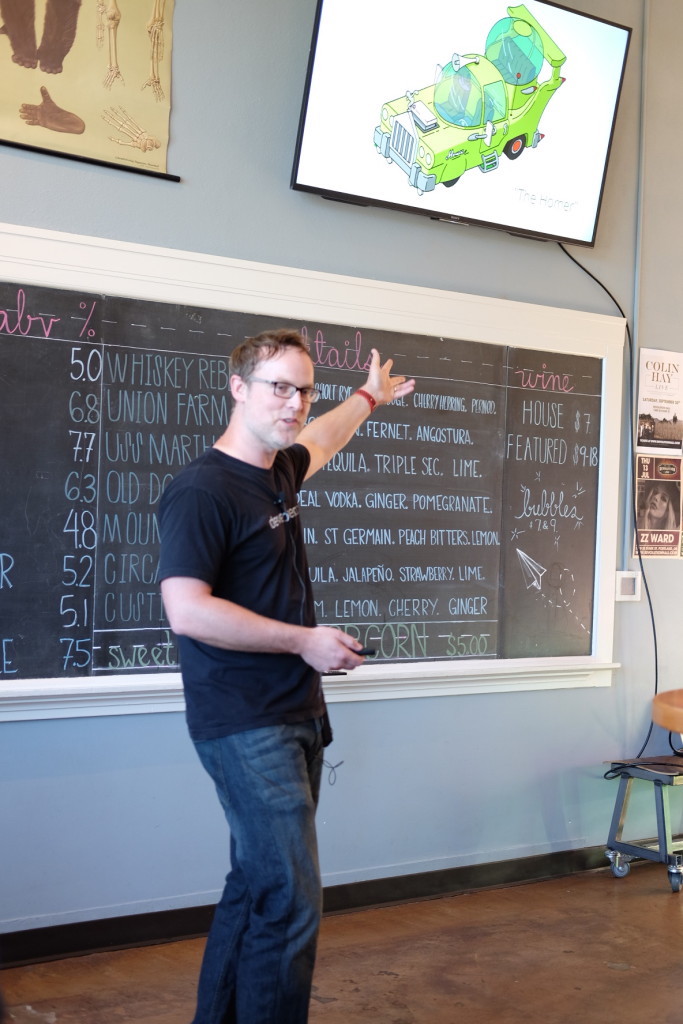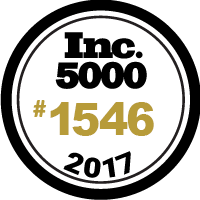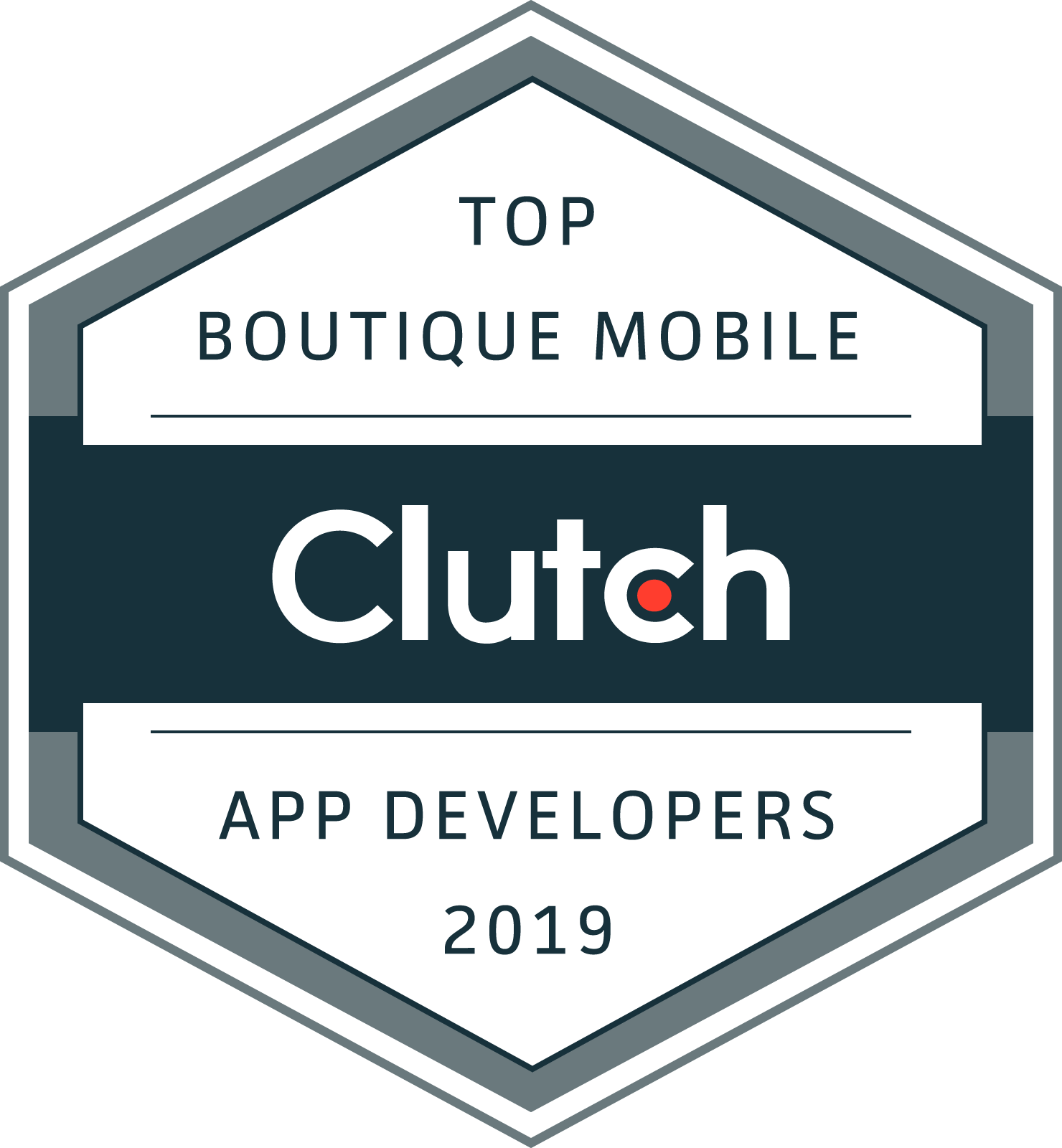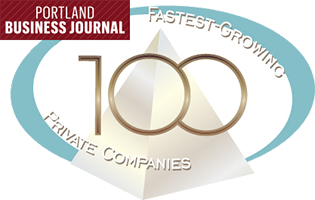On June 29, Portland’s best and brightest digital marketing, development and conversion rate optimization professionals joined the roboboogie team for Camp Optimization, roboboogie’s bi-monthly meetup and networking event. This month roboboogie partnered with the Mobile, Web and Emerging tech wizards from DevelopmentNow. Attendees had the pleasure of hearing from DevelopmentNow’s founder and CEO Ben Strackany. Let me tell you, if you weren’t here, you missed out on some serious wit and wisdom. Thanks Ben!
But, don’t fret, we’ve got you covered with this handy list of key takeaways from Ben’s presentation “Optimizing Innovation: Step-by-Step to MVP.”
Watch the whole Camp Optimization talk here!
So, what in the world is an MVP?
MVP is an acronym for the Minimum Viable Product. Simply put, it’s a development technique for creating new apps, websites, or any product really where you apply the minimal amount of time and resources possible to build a product for the purpose of evaluating its effectiveness and desirability. As Ben put it, it is a technique to “test, measure and learn rapidly”, a way to validate your market hypothesis. Creating an MVP is all about being efficient to minimize time, money or resources. It just makes sense. Before spending endless amounts of time and money trying to sell a product, you need to test to see if a viable market actually exists for your product.
With that definition out of the way, let’s dive into some key takeaways from the MVP master himself.


Look before you leap
Stop. Before you design or build anything, there are a few critical questions that need to be answered:
- Does this product or app already exist?
- If it does exist, what can be improved?
Do not even start your MVP without doing your homework to answer these questions first. Answering these questions, and getting closer to identifying the real opportunities before you even start your MVP, can save dozens of hours or thousands of dollars down the road. Unleash your inner Sherlock Holmes and find out everything you possibly can about your idea.
Start with a version 0.1 mentality
This was a team-favorite concept that Ben presented. To create an effective MVP, you must first start with a set of baseline features/functions. Only the essentials. Don’t introduce any excess features in this initial ‘0.1’ MVP release. Do your research to prioritize the most critical components. Stick to the bare minimum. As Ben put it, “do not look at this first release as a version 1.0, rather version 0.1, a place to capture the learnings and insights to inform version 1.0.” Again, an MVP is all about the least you can do to design and build to get to a product you can test with your target audience.


Start Small
More is not always more. Start with the core components to create a product that you can eventually sell. Break it down to the base components and then build it up from there. If you try to do too much out of the gate, you risk running out of money, time and/or resources, long before getting to market.
Ben illustrated this perfectly with a transportation design analogy. Consider you are looking to build a transportation product for a customer who simply wants to get to work quicker and easier than they can on foot. If you start with visions to build a flying car, you’ve already gone way beyond MVP. Forget all the bells and whistles and start at the very foundation of the opportunity. Consider the most basic thing you can build to solve this challenge. What is that? At the most basic level, it is something that can carry a human, can travel faster than a person walking, and has the ability to stop and start easily. A more appropriate MVP for this situation is not a flying car, but something far more basic. A bike perhaps? If you didn’t start small, and spent all your time, money and resources building a flying car, you may have missed out on a perfectly viable and highly marketable transportation solution.

Your MVP MUST be measurable!
It is ok to iterate and be scrappy about how you test your ideas in an MVP. Clickable prototypes, questionnaires, white-boarding, and black-boarding are all tools you can use to quickly model your design, but make sure your MVP is also able to gather measurable use data. You need to be able to prove that there is a market for your idea and the only way to do that is with solid data (ideally both qualitative and quantitative). Simply saying “people will definitely want this” isn’t good enough anymore. You need to be able to demonstrate engagement, successful completion of key tasks, and strong adoption and retention interest.
Know Your Audience
If it doesn’t provide value to your target customer, it doesn’t matter how much hard work and creative thinking you’ve done on your MVP. So, take your time to thoroughly understand your audience’s needs, motivations and desires. Simply get out there and talk to them. Don’t assume you know what they want. Put some ideas in front of them and get some real feedback so you can avoid building out a bunch of features no one will ever want or use. Ben also cautioned the group to be mindful of biases that can creep in when testing your MVP with close family and friends. While they are easily accessible, they may not be the target audience for your MVP, and even if they are, they might not be completely honest about their needs because of their relationship with you. So, be sure to take a close look at how you are involved with your test audience and how it may affect your testing and results.
Experiment and Learn
The best way to stay nimble and keep your MVP lean and relevant is to quickly adopt an agile test and iterate approach. Keep your idea simple and frequently get it in front of people to respond to it. Then evolve the product based on the feedback you receive. Small focus groups and surveys are great tools to quickly experiment. Design a few variations and preference test some ideas. Simply asking people which interface model they prefer will undoubtedly yield some insightful and actionable feedback. Learn everything you can from your tests and then build upon that knowledge. Keep it lean and agile.
Meet with someone to see how this influences your business



